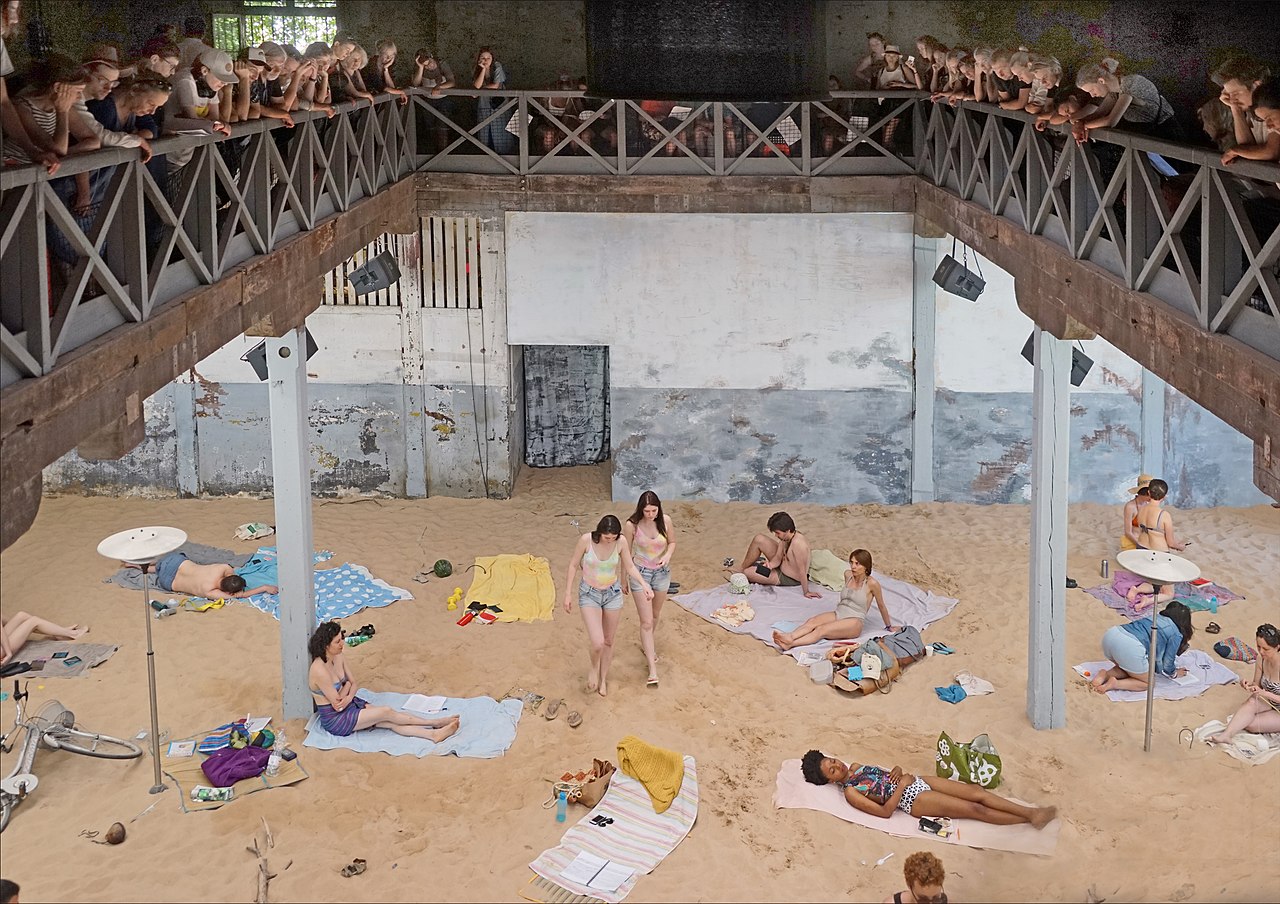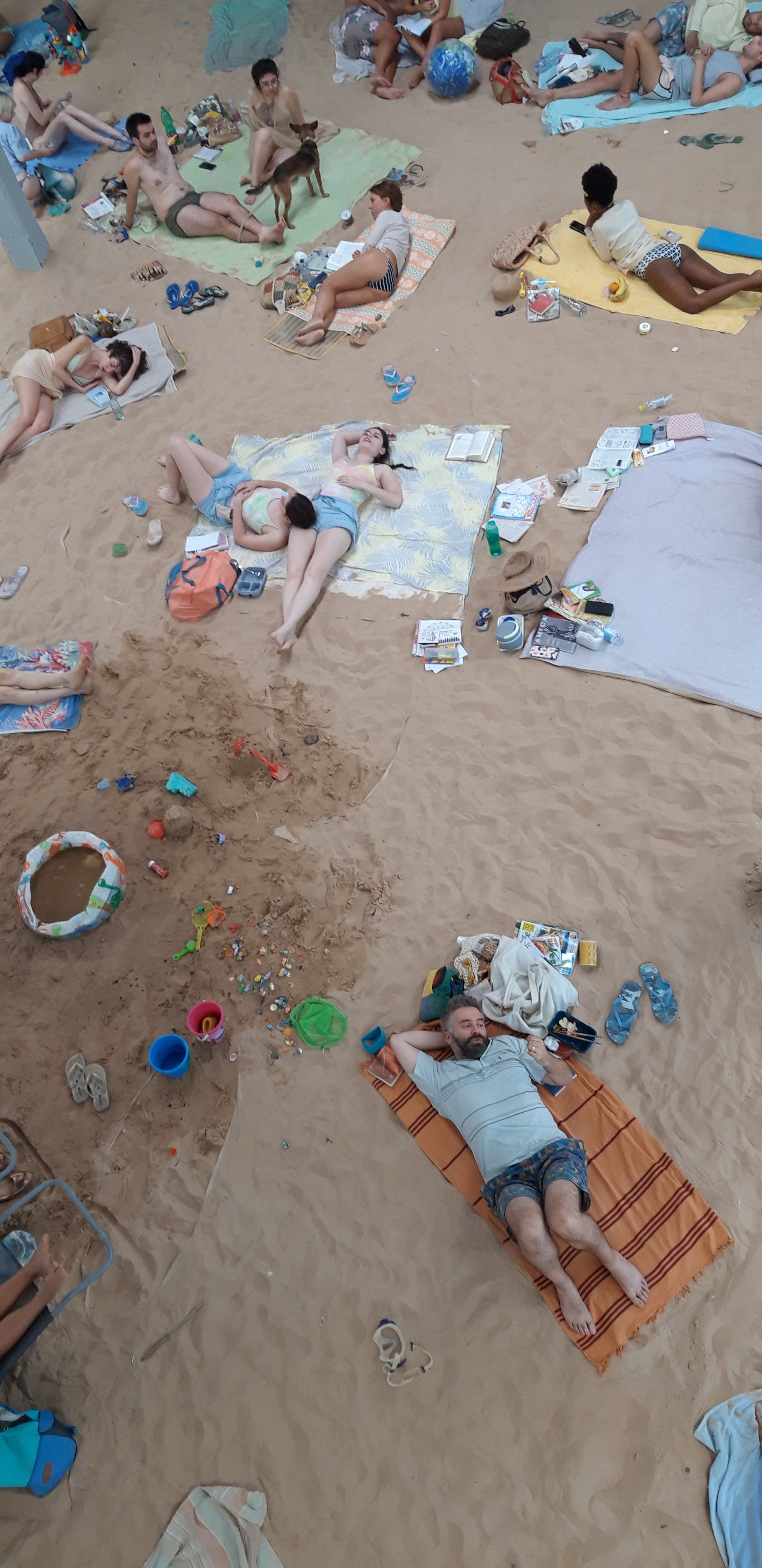The Crisis That Is Not?

How do you talk about the climate crisis in a way that will be heard? How do you create something that people can identify with? It is so easy to discourage the audience by being preachy, terrify them with an overwhelming sense of helplessness.
One of the most famous works that addresses the issue of climate and actually prompts honest reflection is the Lithuanian Pavilion[1] at the 2019 Venice International Art Biennale, which has earned iconic status. Vaiva Grainytė, one of its creators, made it clear that from the very beginning it was meant to address ecological issues and the Anthropocene but without being didactic. It was to use a subtle, romantic language. The project was appreciated both by the jury, which awarded it the Golden Lion, and by the audience, who showed great interest and waited many hours in line to see this opera/performance.
[1] https://www.sunandsea.lt/en

Susan Sontag described our lives as living “under continual threat of two equally fearful, but seemingly opposed destinies: unremitting banality and inconceivable terror,” which seems to be the quintessential thought behind the “Sun & Sea (Marina)” project.
This performance is the work of the group Neon Realism[1] consisting of Rugilė Barzdžiukaitė [filmmaker], Vaiva Grainytė [poet and writer], and Lina Lapelytė [composer and performer]. It made debuted at Vilnius’s National Gallery of Arts in 2017 in Lithuanian. It was adapted into English for the Venice Biennale in a version organised by Lucia Pietroiusti, curator of public programmes at London’s Serpentine Galleries. The military complex of the Marinare Militare was transformed into a giant beach strewn with several tonnes of sand, where beachgoers seem to lounge carefree, absorbed in their thoughts. More than 20 actors and volunteers took part in the performance. Visitors, also those with children and pets, could watch it or join in by telling and singing their own stories. The audience watched the event from the second-floor balcony, transforming the “vacationers” into a living picture.
The sounds of seagulls and ice cream trucks echo in the distance, and one by one, the vacationers sing about a world very similar to our own, full of minor inconveniences. They complain[2] about the company, the presence of dogs. A woman describes her holiday in Australia while her husband laments his inability to slow down despite his exhaustion, for fear of hurting his image.
Over time, the narrative shifts to refer directly to the climate crisis: two sisters recall how they cried when they learned that “corals will be gone”, “the fish would go extinct”, “bees are massively falling from the sky”, and sing: “When my body dies, I will remain, in an empty planet without birds, animals and corals”. They come up with a solution: a 3D printer: “with the press of a single button, I will remake this world again … we will print out the bees so that at least some sweetness is left.”
Unlike most works about climate change which try to scare people into action, this performance avoids propaganda and focuses on the mundane: “It’s about nothingness – nothing is happing,”[3] Grainytė said. All the elements, including the audience watching the event from above, make up a pre-apocalyptic vision suggesting that disaster is nigh. The end of the earth, our end, is quiet, creeping in unnoticed.
[1] https://neonrealism.lt/sun-and-sea/
[2] https://www.sunandsea.lt/Sun-and-Sea_libretto.pdf
[3] Julia Halpern, It’s Hard to Make Good Art About Climate Change. The Lithuanian Pavilion at the Venice Biennale Is a Powerful Exception, https://news.artnet.com/art-world/lithuanian-pavilion-1543168
 Powrót
Powrót